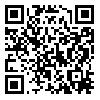Volume 3, Issue 1 (Apr-June 2014)
JCHR 2014, 3(1): 39-48 |
Back to browse issues page
Download citation:
BibTeX | RIS | EndNote | Medlars | ProCite | Reference Manager | RefWorks
Send citation to:



BibTeX | RIS | EndNote | Medlars | ProCite | Reference Manager | RefWorks
Send citation to:
Haerian-Ardakani A, Morowatisharifabad M A, Razavinia M, Rezaeipandari H. Dental fear among patients referred to dental offices in Mashhad (Iran). JCHR 2014; 3 (1) :39-48
URL: http://jhr.ssu.ac.ir/article-1-153-en.html
URL: http://jhr.ssu.ac.ir/article-1-153-en.html
Ahmad Haerian-Ardakani 
 , Mohammad ali Morowatisharifabad *1
, Mohammad ali Morowatisharifabad *1 
 , Mohsen Razavinia
, Mohsen Razavinia 
 , Hassan Rezaeipandari
, Hassan Rezaeipandari 


 , Mohammad ali Morowatisharifabad *1
, Mohammad ali Morowatisharifabad *1 
 , Mohsen Razavinia
, Mohsen Razavinia 
 , Hassan Rezaeipandari
, Hassan Rezaeipandari 

1- , morowatisharif@yahoo.com
Abstract: (7405 Views)
Background: Dental fear is a major factor in postponing and cancelling a dental appointment. The studies in this field are still limited. The current study was conducted to examine dental fear in patients going to dentists in Mashhad, Iran.
Materials and Methods: In this descriptive study, 400 patients were selected randomly from 20 dental offices in Mashhad. The data were collected, using Dental Fear Scale. The reliability and validity of the questionnaire have been measured and confirmed in previous studies. The data were analyzed, using the SPSS software to perform t-test, ANOVA, Spearman’s rank-order correlation coefficient, and Pearson’s product-moment correlation coefficient.
Results: Nearly 20.8% of the participants had mild, 57.5% had moderate, and 21.8% had severe dental fear. The mean score of fear was statistically higher in females (49.95±13.3) compared to males (39.69±14.7). In terms of marital status, the highest mean score of fear was observed among the divorced and widows (51.82 ± 14.2). In terms of occupation, the highest mean score of fear was observed among the housewives (52.63±12.89). Correlational analysis showed the following inverse relationship between dental fear score and age(r=-0.18,p<0.001), education level(ρ=-0.28,p<0.001)and income level (ρ=-0.39,p< 0.001).
Conclusion: females, particularly housewives, have a significantly higher level of dental fear, and it had an inverse correlation with age, education level and level of income and they should be considered in interventional and educational programs aimed decreasing dental fear level.
Review: Research |
Subject:
General
Received: 2014/06/22 | Accepted: 2014/06/22 | Published: 2014/06/22
Received: 2014/06/22 | Accepted: 2014/06/22 | Published: 2014/06/22
Send email to the article author
| Rights and permissions | |
 |
This work is licensed under a Creative Commons Attribution 4.0 International License. |



